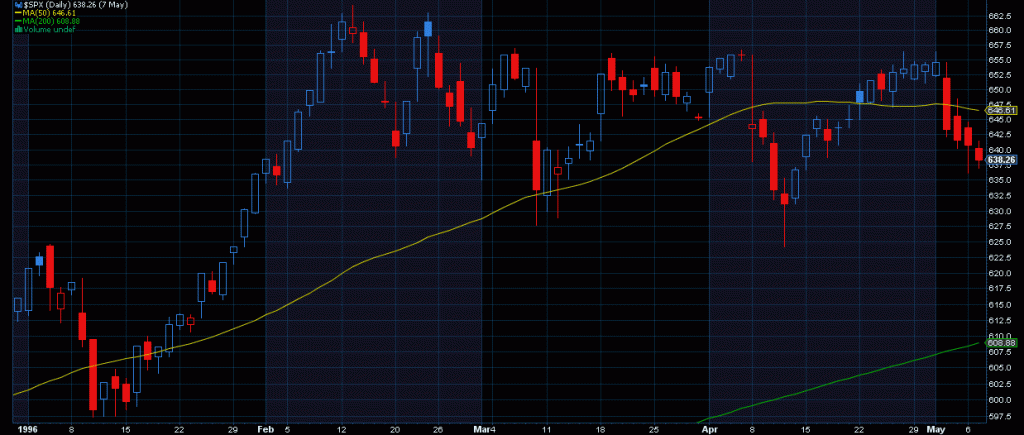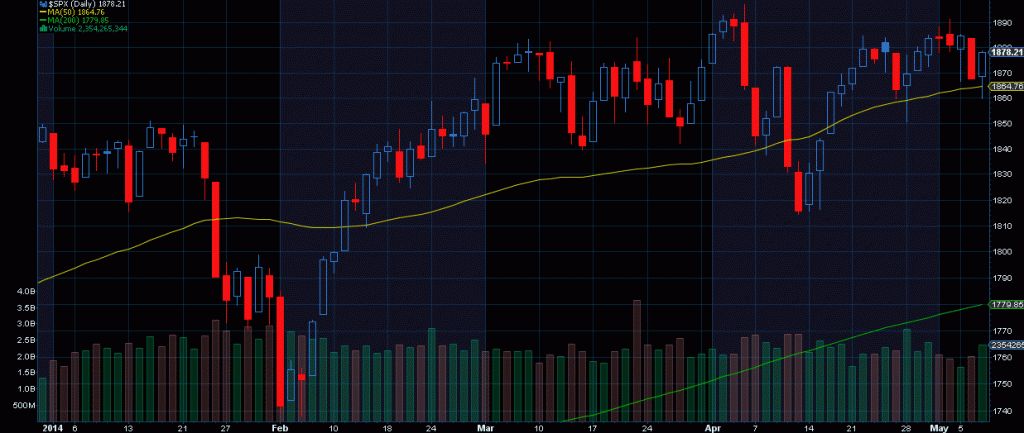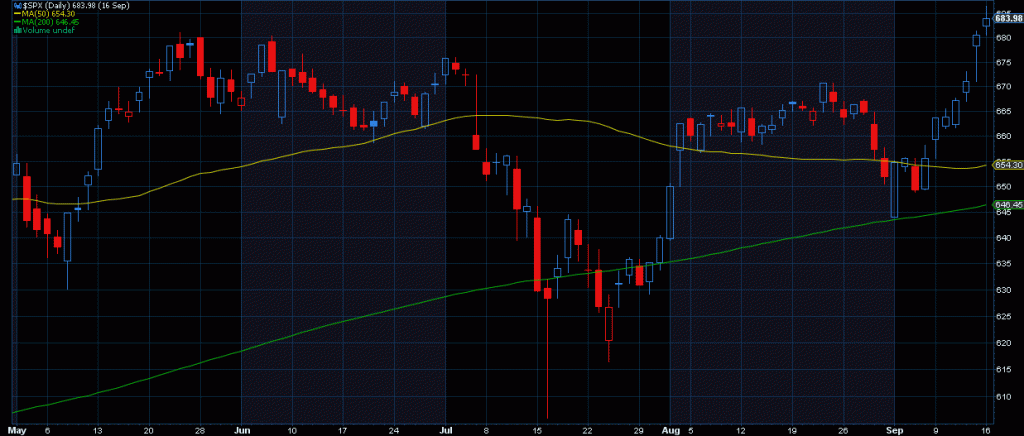Comparisons to the bull market of the 90s can certainly act as a point of guidance for the current market. One analog that been getting increased attention is the comparison between 2014 and 1996. Here is a look at both markets from a price perspective:

S&P 500 1996

S&P 500 2014
If you look beyond pure price movement and the similarities in terms of the number of years we have been rallying at present compared to 1996 etc., you will notice one striking characteristic in the internal dynamics with 1996 vs. 2014.
In 1996, before the internet really became a buzzword, with companies like YHOO and AMZN either just coming to market or being pre-IPO, the semiconductor stocks were the go to momentum plays. They powered the Windows PCs that you would run on your desktop that would get you onto AOL or Earthlink. Companies like MU, LRCX, LSI and AMAT ran the show back then. They were technology. They were momentum. When you wanted returns in excess of the benchmarks you went into these names. Much like the FB, YELP and TSLA of our current market.
Something peculiar began to happen to the semiconductor names around late 1995, really gathering momentum by the middle of 1996. They completely ran out of steam,with a majority of them suffering declines far greater than 50% from their 1995 peaks. These were stocks that had appreciated hundreds, even thousands of percent the previous few years. Investors were all in, not realizing that serpents thick, scaly tail was being wound up to knock them head first into the deep ravine below.
How much had semiconductor names made investors?
LSI Jan 1993 $2.69 per share October 1995 $29 per share
MU Jan 1993 $1.89 per share October 1995 $40 per share
AMAT Jan 1993 $1.05 per share October 1995 $6.39 per share
INTC Jan 1993 $2.72 per share October 1995 $7.52 per share
Investors were happy. Too happy, in fact. The stocks stalled in October and began declining in earning in early 1996. By August of 1996 the declines in the stocks of the companies mentioned above were as follows:
LSI -66%
MU -75%
AMAT -53%
INTC +23% one of the few exceptions of the group
For a majority of the time that these growth driven leaders of the market declined the S&P 500 did nothing, as you can see above. The decline in semis only interrupted the upside momentum in the market by stalling the uptrend, creating a frustrating, sideways market. It was only during the last leg of the decline in these names that took place in the summer that the S&P succumbed to the pressure.
Here is the S&P 500 from May 1996 - September 1996 when semiconductor names completed their last leg down:

S&P 500 May-September 1996
We have experienced something very similar with social media stocks in 2014 suffering tremendous losses over the past few months. In the meantime, the S&P has done nothing but move sideways, acting as if this hiccup in momentum names is but a temporary inconvenience.
I expect that much like 1996, the illiquidity that comes with the summer trading months paired with the fear created from the downside volatility in momentum will cause the S&P 500 to crack, finally giving investors the 10% correction they have been lusting over.
So what happened to semiconductor names after some of them fell close to 80% from late 1995 to mid-1996? A lot of them hit new highs within a year. With others waiting around a few years to take on new highs. Nevertheless, the worst of the selling was done in just one small 9 month window from late-1995 to mid-1996.
It didn't mean a vicious bear market was on the way. It didn't mean growth was dead. It was simply a correction within an overextended market that hurt those investors that were leveraged or concentrated beyond any point of reason. A reset button was hit that allowed the markets to flourish for years after that event.
Market history doesn't necessarily repeat itself exactly but it certainly has a way of rhyming.
